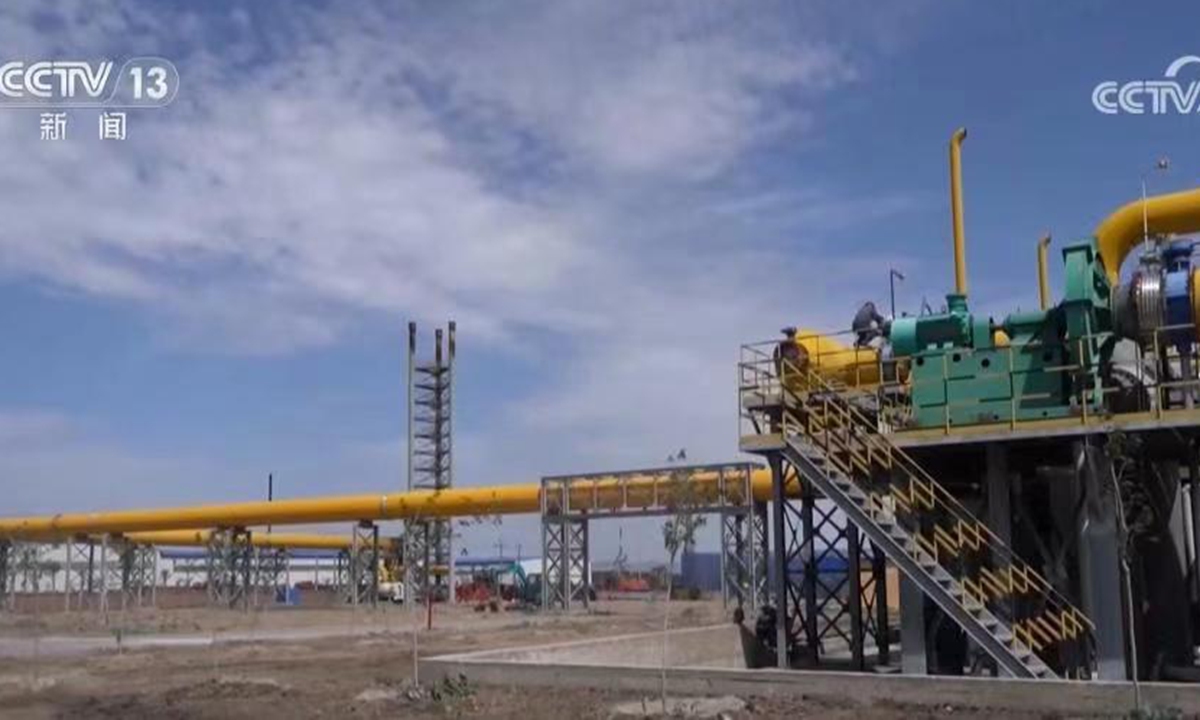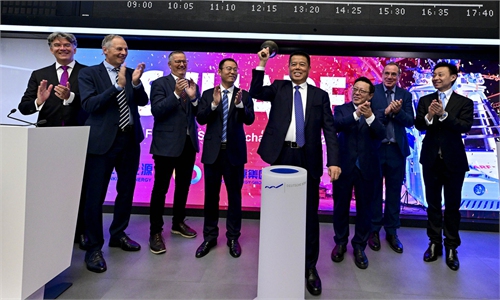
China's largest and most advanced coal-to-liquid (CTL) project, using domestically developed second-generation technology, broke ground on October 8 in Hami, Northwest China's Xinjiang Uygur Autonomous Region by CHN Energy Investment Group. Photo: screenshot of CCTV's report
China's largest and most advanced coal-to-liquid (CTL) project, using domestically developed second-generation technology, broke ground on Tuesday in Hami, Northwest China's Xinjiang Uygur Autonomous Region, according to CHN Energy Investment Group (CHN Energy).
The total investment in the project is approximately 170 billion yuan ($23.29 billion). Once operational, the project will produce 4 million tons of CTL products annually, including 3.2 million tons from direct liquefaction and 800,000 tons from indirect liquefaction.
The project combines coal mining, coal-to-oil conversion, coal chemicals, renewable energy, and new materials production. It features the world's first second-generation CTL technology and is the first coal-to-oil project in Xinjiang.
The group likened the project to a large oilfield sitting atop a sea of coal. The first phase is expected to be completed by the end of 2027, creating 5,500 direct jobs, nearly 30,000 indirect jobs, and generating an annual industrial output of 31.4 billion yuan, greatly enhancing local industrial growth, said Zhou Xin, site manager at CHN Energy's Xinjiang Hami branch, the CCTV reported.
"The project taps into Hami's coal and renewable energy resources to build a national coal-to-oil and gas strategic base, boosting efficient coal use and strengthening Xinjiang region's role in China's energy security," Lin Boqiang, director of the China Center for Energy Economics Research at Xiamen University, told the Global Times on Wednesday.
It represents a significant milestone in advancing China's energy transition and strategic security, according to the group.
CTL usually operates via two main methods: direct and indirect. In 2008, the world's first million-ton direct CTL plant was launched in Ordos, North China's Inner Mongolia Autonomous Region, making China the sole holder of the advanced technology. The second-generation technology, which was developed through process improvements, will be used in the new 4-million-ton-per-year CTL project.
Given China's limited oil and gas reserves and abundant coal reserve, if carbon emissions can be managed, such as through enhanced carbon capture technology, the coal liquefaction project holds great potential and is a promising initiative for the future, Lin said.


